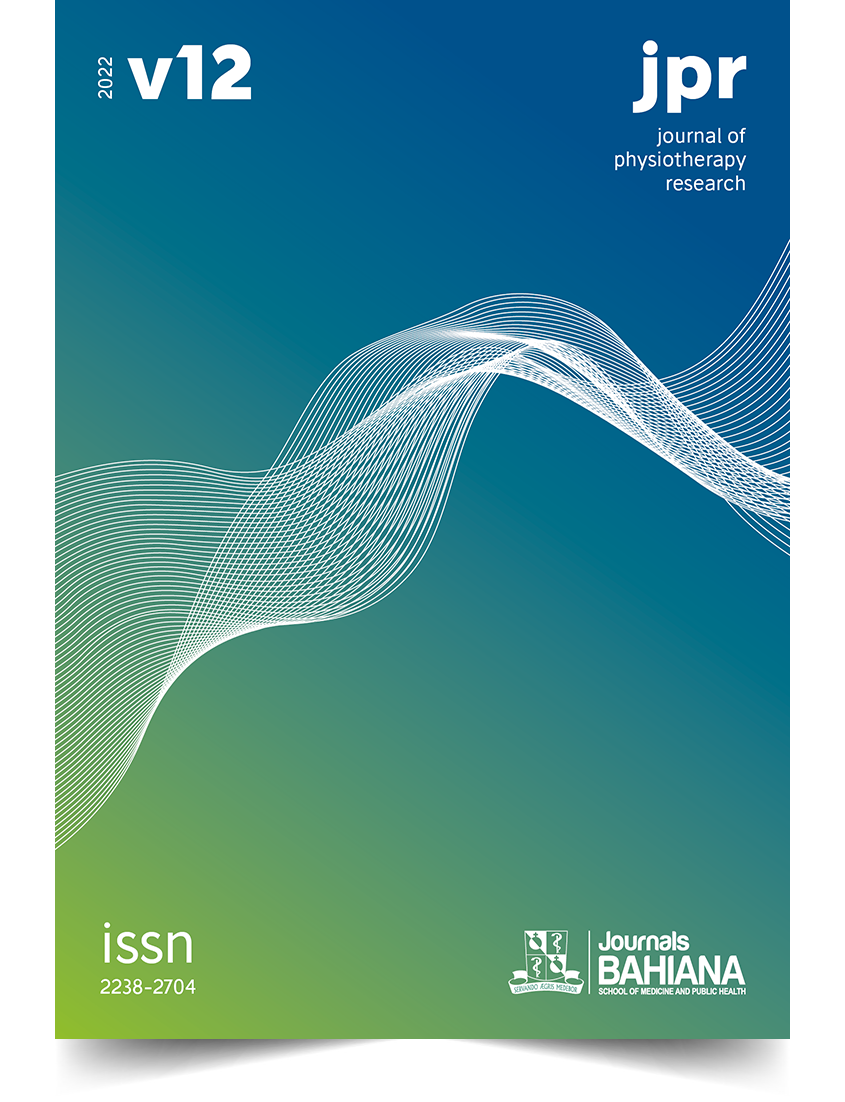Functional status after PICU hospitalization – a six-month follow-up: a multicenter study
DOI:
https://doi.org/10.17267/2238-2704rpf.2022.e4768Keywords:
Pediatric critical care, Functional status, Morbidity, PediatricAbstract
BACKGROUND: After a critical disease many complications could appear, one of them is functional impairment. OBJECTIVES: To evaluate the functional status of critical pediatric patients after hospital discharge. MATERIALS AND METHODS: Prospective longitudinal observational study, included 214 patients with age between one month and <18 years old, who needed PICU admission. The functional status was evaluated with Functional Status Scale (FSS-Brazil) at baseline, PICU discharge, hospital discharge, three and six months after this and new morbidity was defined as a worsening in functional status in the FSS-Brazil of two or more points in the same domain compared with the baseline score. The Generalized Estimating Equation model was used to compare the FSS-Brazil scores. McNemar Chi-square test was used to evaluate the difference between the categories of functional status in each domain. Poisson regression was performed to determine associations between clinical variables and functional status. RESULTS: Of the 214 patients, 135 finished the follow-up. The majority of the sample was males (57.5%), with some chronic condition (76.2%) and 45.8% were readmitted to the hospital. It was observed moderate dysfunction in FSS-Brazil score (10-15) at PICU discharge (42.1%) and the new morbidity was observed in 11.5% of the sample after hospital discharge. More days in invasive mechanical ventilation increases 1.02 the risk of new morbidity. CONCLUSIONS: Patients who needed PICU recovered functional status after hospital discharge and remained stable in three and six months. The incidence of new morbidity was low and invasive mechanical ventilation was a risk factor for new morbidity.
Downloads
References
(1) Namachivayam P, Shann F, Shekerdemian L, Taylor A, van Sloten I, Delzoppo C, et al. Three decades of pediatric intensive care: Who was admitted, what happened in intensive care, and what happened afterward. Pediatr Crit Care Med. 2010;11(5):549-55. https://doi.org/10.1097/PCC.0b013e3181ce7427
(2) Pollack MM, Holubkov R, Funai T, Clark A, Berger JT, Meert K, et al. Pediatric intensive care outcomes: development of new morbidities during pediatric critical care. Pediatr Crit Care Med. 2014;15(9):821-7. https://doi.org/10.1097/PCC.0000000000000250
(3) Pereira GA, Schaan CW, Ferrari RS. Functional evaluation of pediatric patients after discharge from the intensive care unit using the Functional Status Scale. Rev Bras Ter Intensiva. 2017;29(4):460-5. https://doi.org/10.5935/0103-507X.20170066
(4) Ong C, Lee JH, Leow MK, Puthucheary ZA. Functional Outcomes and Physical Impairments in Pediatric Critical Care Survivors: A Scoping Review. Pediatr Crit Care Med. 2016;17(5):e247-59. https://doi.org/10.1097/PCC.0000000000000706
(5) Choong K, Al-Harbi S, Siu K, Wong K, Cheng J, Baird B, et al. Functional recovery following critical illness in children: the "wee-cover" pilot study. Pediatr Crit Care Med. 2015;16(4):310-8. https://doi.org/10.1097/PCC.0000000000000362
(6) Oom, P. Morbilidade em Cuidados Intensivos Pediátricos. Acta Pediatr Port. 2004;35(3):279-85.
(7) Cashen K, Reeder R, Dalton HJ, Berg RA, Shanley TP, Newth CJL, et al. Functional Status of Neonatal and Pediatric Patients After Extracorporeal Membrane Oxygenation. Pediatr Crit Care Med. 2017;18(6):561-70. https://doi.org/10.1097/PCC.0000000000001155
(8) Pollack MM, Holubkov R, Glass P, Dean JM, Meert KL, Zimmerman J, et al. Functional Status Scale: new pediatric outcome measure. Pediatrics. 2009;124(1):e18-28. https://doi.org/10.1542/peds.2008-1987
(9) Pinto NP, Rhinesmith EW, Kim TY, Ladner PH, Pollack MM. Long-Term Function After Pediatric Critical Illness: Results From the Survivor Outcomes Study. Pediatr Crit Care Med. 2017;18(3):e122-e30. https://doi.org/10.1097/PCC.0000000000001070
(10) Meert KL, Banks R, Holubkov R, Pollack MM. Morbidity and Mortality in Critically Ill Children. II. A Qualitative Patient-Level Analysis of Pathophysiologies and Potential Therapeutic Solutions. Crit Care Med. 2020;48(6):799–807. https://doi.org/10.1097/CCM.0000000000004332
(11) Pereira GA, Schaan CW, Ferrari RS, Normann TC, Rosa NV, Ricachinevsky CP, et al. Functional Status Scale: Cross-Cultural Adaptation and Validation in Brazil. Pediatr Crit Care Med. 2019;20(10):e457-e63. https://doi.org/10.1097/PCC.0000000000002051
(12) Dannenberg VC, Borba GC, Rovedder PME, Carvalho PRA. Poor Functional Outcomes in Pediatric Intensive Care Survivors in Brazil: Prevalence and Associated Factors. J Pediatr Intensive Care. 2021;10. https://doi.org/10.1055/s-0041-1730928
(13) Choong K, Fraser D, Al-Harbi S, Borham A, Cameron J, Cameron S, et al. Functional Recovery in Critically Ill Children, the “weeCover” Multicenter Study. Pediatr Crit Care Med. 2018;19(2):145–54. https://doi.org/10.1097/PCC.0000000000001421
(14) Watson RS, Asaro LA, Hutchins L, Bysani GK, Killien EY, Angus DC, et al. Risk factors for functional decline and impaired quality of life after pediatric respiratory failure. Am J Respir Crit Care Med. 2019;200(7):900–9. https://doi.org/10.1164/rccm.201810-1881OC
(15) Piva S, Fagoni N, Latronico N. Intensive care unit–acquired weakness: unanswered questions and targets for future research: [Version 1; peer review: 3 approved]. F1000Research. 2019;8:F1000 Faculty Rev-508. https://doi.org/10.12688/f1000research.17376.1
Downloads
Published
Issue
Section
License
Copyright (c) 2022 Jéssica Knisspell de Oliveira, Camila W. Schaan, Camila M. de Campos, Nathalia Vieira, Rayane S. Rodrigues, Larissa S. de Moraes, Janice L. Lukrafka, Renata S. Ferrari

This work is licensed under a Creative Commons Attribution 4.0 International License.
This work is licensed under a Creative Commons Attribution 4.0 International License.



